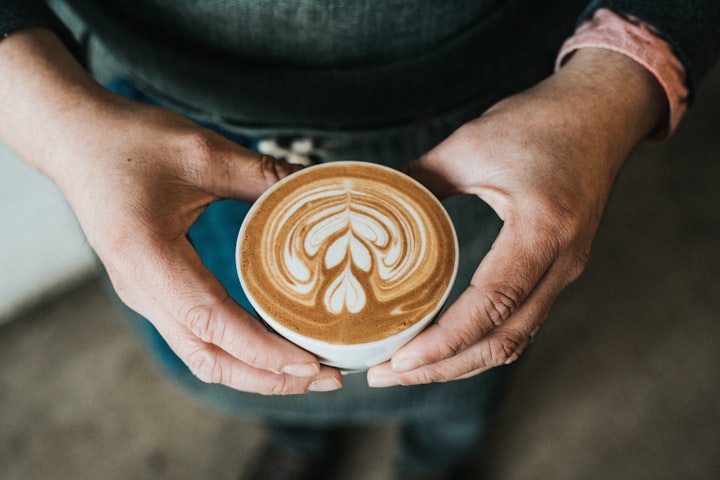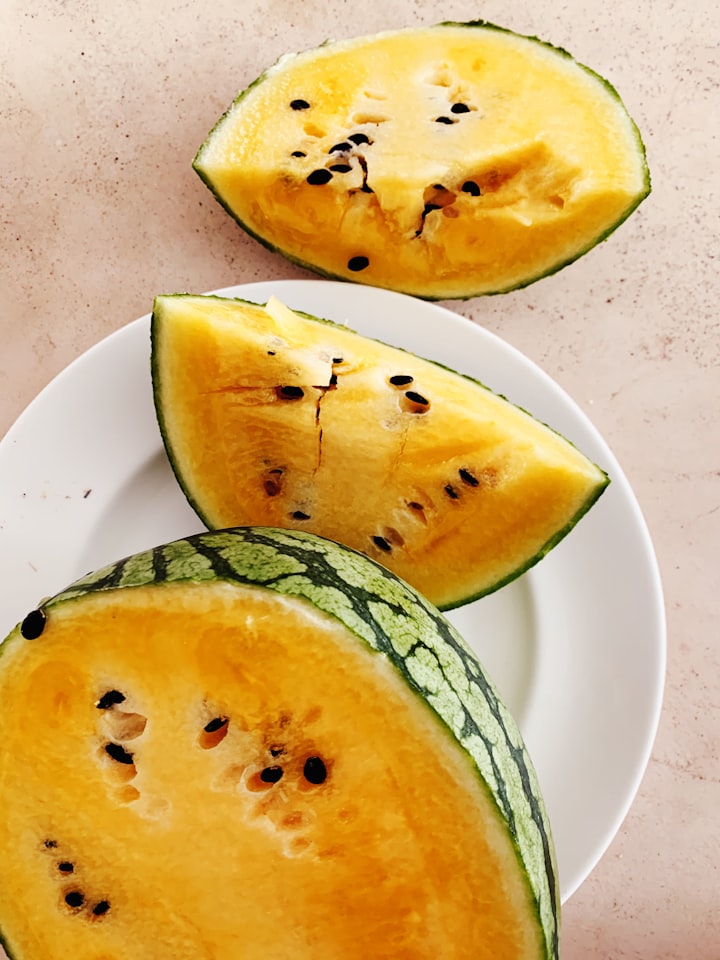The Dark, Rich, and Delicious Art of Brewing the Perfect Cup of Coffee
Coffee 101: Tips and Techniques for the Perfect Cup

I. Introduction
A. Are you a coffee lover looking to elevate your at-home brewing skills? Look no further!
B. From its origins in the ancient coffee forests of Ethiopia, to its current status as a daily staple for millions of people around the world, coffee has a rich history and cultural significance. Whether you're a fan of bold, full-bodied roasts or more subtle, nuanced flavors, the art of brewing the perfect cup of coffee is one that requires both knowledge and practice. In this article, we'll delve into the many factors that can influence the taste and quality of your coffee, and provide tips and techniques for crafting the perfect brew. So grab your favorite mug and let's get started on our journey to coffee mastery!
II. Choosing the Right Coffee Beans
A. Different types of coffee beans and their flavors:
Coffee beans come in a wide range of varieties, each with its own distinct flavor profile. Arabica beans, which are generally considered to be of higher quality, tend to have a sweeter, softer flavor with notes of fruit and berries. Robusta beans, on the other hand, have a stronger, more bitter taste and are higher in caffeine. Within these broad categories, there are also many different subtypes of beans, each with its own unique flavor characteristics.
B. Tips for selecting high-quality beans:
When choosing coffee beans, look for ones that are fresh and have a consistent, even roast. You can often find this information on the packaging or from the retailer. Additionally, try to source beans from specialty coffee roasters or directly from the farm, as these are more likely to be of higher quality.
C. Storing coffee beans to maintain freshness:
Proper storage is key to maintaining the freshness and flavor of your coffee beans. Keep them in an airtight container in a cool, dry place, away from direct sunlight and sources of heat and moisture. Avoid storing beans in the freezer or refrigerator, as the moisture and temperature fluctuations can harm their quality. It's also best to use the beans within a week or two of purchasing or opening the bag to ensure optimal flavor.
III. Grinding and Brewing Techniques
A. The importance of proper grinding for optimal brewing:
Grinding your coffee beans just before brewing is essential for achieving the best taste and aroma. The size and consistency of the grind can greatly affect the extraction of flavors during brewing. A finer grind will extract more flavors, resulting in a stronger, more full-bodied cup of coffee. A coarser grind, on the other hand, will extract less flavor and result in a milder brew. It's important to use the right grind size for your chosen brewing method to ensure optimal flavor.
B. Different brewing methods and their characteristics:
There are many different ways to brew coffee, each with its own set of characteristics and flavors. Some common brewing methods include drip coffee makers, pour-over, French press, and espresso. Drip coffee makers use a filter to drip hot water over the grounds, producing a clean and consistent flavor. Pour-over brewing involves manually pouring hot water over the grounds in a cone-shaped filter, resulting in a more nuanced and balanced flavor. French press brewing involves steeping the grounds in hot water, producing a full-bodied, rich-tasting coffee. Espresso, made using an espresso machine, is a highly concentrated form of coffee with a strong, bold flavor.
C. Techniques for brewing coffee to achieve the desired strength and flavor:
The strength and flavor of your coffee can be adjusted by altering the ratio of coffee to water, the brewing time, and the temperature of the water. For a stronger cup of coffee, use more coffee in relation to the amount of water. For a milder brew, use less coffee. You can also experiment with the brewing time to achieve your desired strength and flavor. Additionally, using water that is too hot or too cold can negatively impact the taste of your coffee, so it's important to use water that is around 200 degrees Fahrenheit.
IV. The Role of Water Quality
A. The impact of water quality on the taste of coffee:
The quality of the water you use to brew your coffee can greatly affect its taste. Hard water, which has a high mineral content, can impart an off-flavor to the coffee and leave behind mineral deposits in your brewing equipment. Soft water, on the other hand, may not provide enough minerals to extract the full range of flavors from the coffee beans. Filtered water is generally the best option for brewing coffee, as it removes impurities and contaminants that can affect the taste.
B. Tips for using the right type and amount of water:
To achieve the best-tasting coffee, use filtered water that is free of impurities and contaminants. It's also important to use the right amount of water in relation to the amount of coffee you are brewing. As a general rule, use about 1 to 2 tablespoons of ground coffee for every 6 ounces of water. Adjust the ratio to your personal taste preferences. Finally, be sure to use water that is at the right temperature, around 200 degrees Fahrenheit, to extract the optimal flavors from the coffee beans.
V. Equipment and Tools
A. Essential equipment for brewing coffee at home:
To brew coffee at home, you will need a few basic pieces of equipment. These include a coffee grinder, a brewing method (such as a drip coffee maker, French press, or pour-over setup), and a vessel for serving the coffee (such as a mug or carafe). You will also need a source of hot water, such as a stovetop kettle or electric hot water heater.
B. Optional tools and gadgets that can enhance the brewing process:
There are many additional tools and gadgets available that can help you fine-tune your coffee-brewing process. Some examples include a coffee scale to measure the precise amount of coffee and water you use, a thermometer to ensure the water is at the optimal temperature, a burr grinder for a more consistent grind, and a frother for making lattes and cappuccinos. While these tools are not essential, they can be useful for those who want to really dial in their coffee-making process.
VI. Creative and Unconventional Brewing Methods
A. Alternative brewing methods to try at home:
In addition to the more common brewing methods such as drip, French press, and pour-over, there are many alternative brewing methods that can produce interesting and unique flavors. Some examples include cold brew, where coffee is steeped in cold water for an extended period of time; AeroPress, a method that uses air pressure to extract flavors from the coffee; and the Chemex, a pour-over method that uses a special thick filter to produce a clean, bright-tasting coffee.
B. Tips for experimenting with different brewing techniques:
If you're interested in trying out some unconventional brewing methods, here are a few tips to keep in mind:
Research the method and familiarize yourself with the specific techniques and equipment needed.
Start with a small batch and adjust the variables (such as the coffee-to-water ratio and brewing time) to see how it affects the flavor.
Use fresh, high-quality coffee beans and filtered water for the best results.
Don't be afraid to experiment and have fun! Part of the joy of coffee brewing is the opportunity to try new things and discover your own preferences.
VII. Pairing Coffee with Food and Drink
A. How to match coffee with different foods and drinks:
Just like wine, coffee has a wide range of flavors and aromas that can complement or contrast with certain foods and drinks. In general, darker, fuller-bodied roasts tend to pair well with rich, savory foods, while lighter roasts are better suited for sweeter or more delicate flavors. For example, a bold, dark roast might be good with a slice of chocolate cake, while a light, fruity roast might pair well with a fruit tart. When pairing coffee with food, it's also important to consider the strength of the coffee and the intensity of the flavors in the food.
B. Ideas for coffee-themed meals and tastings:
If you're a coffee lover looking for new and creative ways to enjoy your favorite beverage, here are a few ideas for coffee-themed meals and tastings:
Coffee and dessert pairings:
Create a tasting flight of different coffees paired with complimentary desserts, such as chocolate truffles, fruit tarts, or cheesecakes.
Coffee-infused recipes: Experiment with using coffee as a flavor component in dishes such as coffee-rubbed steak, coffee-flavored ice cream, or coffee-glazed ham.
Coffee tastings: Host a coffee tasting event with different types of beans and brewing methods, and invite guests to sample and compare the flavors.
Coffee and breakfast pairings: Pair your morning coffee with breakfast dishes such as eggs, bacon, or pastries for a delicious start to the day.
VIII. The Ethical and Environmental Considerations of the Coffee Industry
A. The impact of coffee production on the environment:
Coffee is one of the world's most widely traded and consumed commodities, and its production can have significant environmental impacts. The coffee industry is a major contributor to deforestation, as land is cleared to make way for coffee plantations. In addition, the use of pesticides and fertilizers in coffee production can harm soil health and water quality. Climate change is also having an impact on coffee production, with rising temperatures and changing weather patterns threatening the viability of certain coffee-growing regions.
B. Ethical and sustainable coffee practices:
If you're concerned about the environmental and ethical impacts of the coffee industry, there are several ways you can support more sustainable and responsible practices:
Look for coffee that is certified as organic, fair trade, or shade-grown. These certifications ensure that the coffee was grown using environmentally friendly practices and that the farmers who grew it were treated fairly.
Support local coffee roasters and shops that source their beans from sustainable and ethical sources.
Consider investing in a reusable coffee cup or mug to reduce waste from disposable cups.
Educate yourself about the environmental and ethical issues facing the coffee industry, and share this information with others to raise awareness.
IX. Conclusion
A. In this article, we explored the art and science of brewing the perfect cup of coffee. We discussed the importance of choosing high-quality beans and the various brewing methods and techniques that can be used to achieve different flavors and strengths. We also touched on the role of water quality, the tools and equipment needed for brewing coffee, and the ethical and environmental considerations of the coffee industry.
B. Now that you have a better understanding of the many factors that can influence the taste and quality of your coffee, it's time to put your newfound knowledge into practice. Experiment with different brewing methods, coffee beans, and ratios to find your own perfect cup of coffee. Don't be afraid to try out unconventional brewing techniques or to pair your coffee with different foods and drinks. The beauty of coffee brewing is that there are endless ways to enjoy it, so have fun and find what works best for you!





Comments
There are no comments for this story
Be the first to respond and start the conversation.